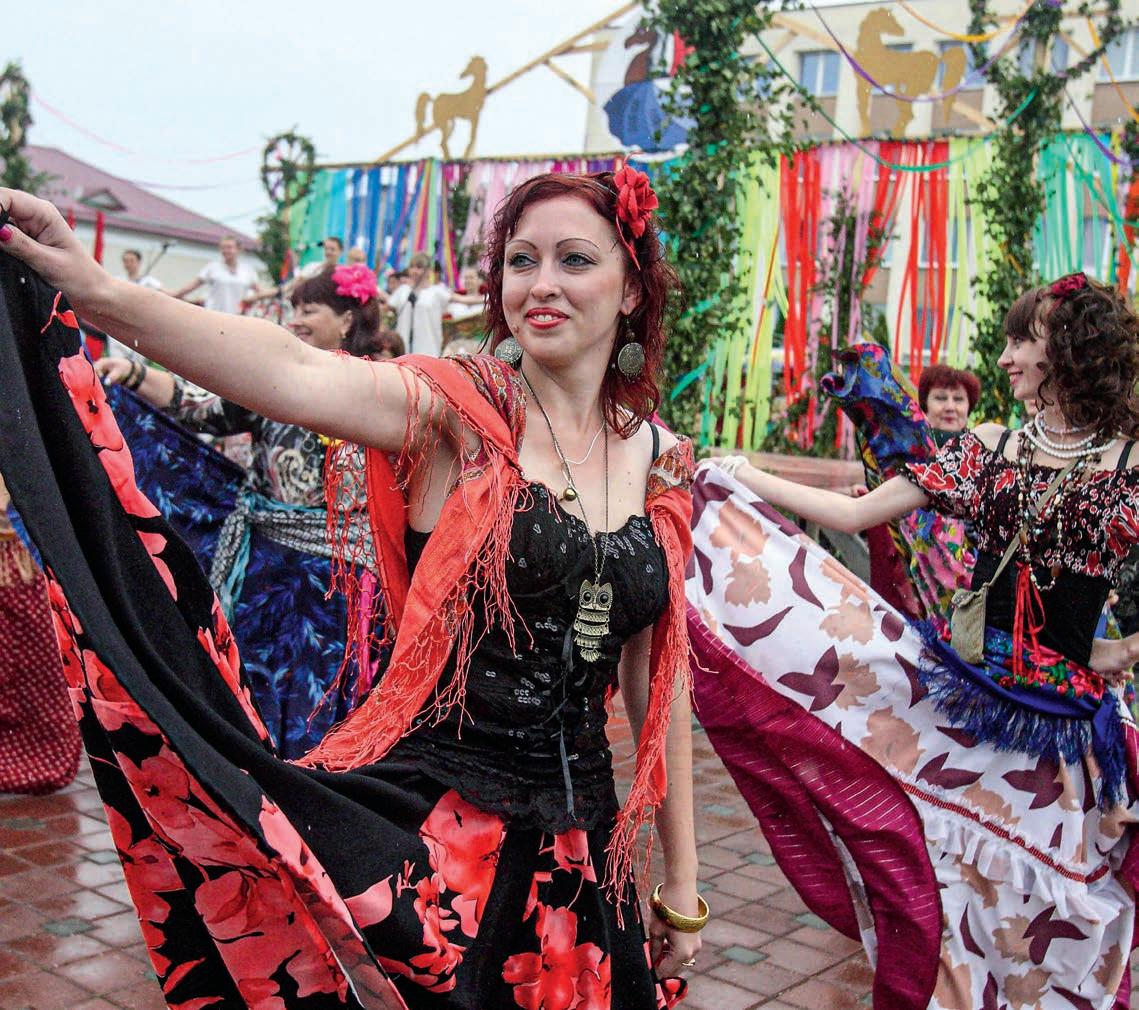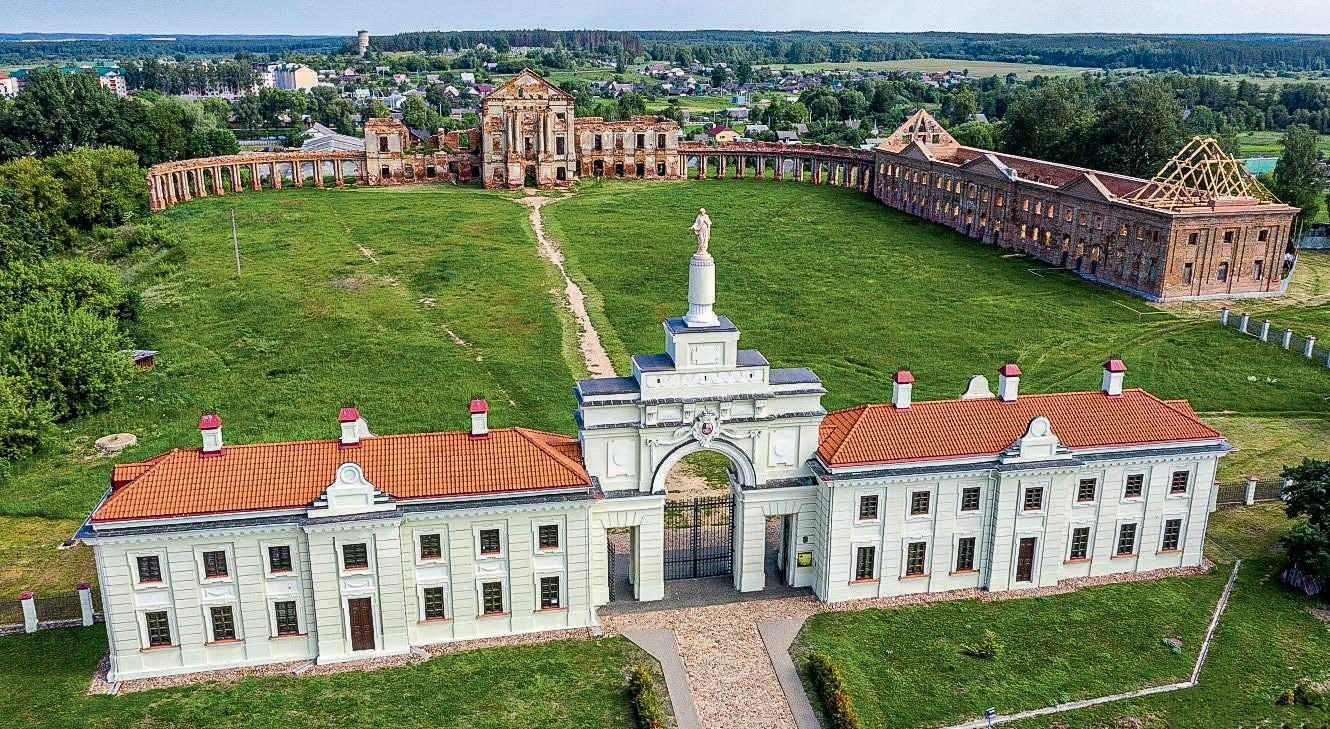
20 minute read
Attractive Polesie Land
Today Brest region is widely known outside the country thanks to its symbols: Brest Fortress and Belovezhskaya Pushcha. In addition, clean rivers and lakes, dense forests, pristine bogs of Polesie, a rich historical and heroic past – all this contributes to a varied, interesting and informative recreation in the region.
planetabelaruS.by
Advertisement
St. nicholas church in brest
– We have preserved and restored many historical, cultural and architectural monuments, – says Denis Nikityuk, head of the tourism department of the sports and tourism department of Brest Region Executive Committee. – Among the most famous is, of course, a symbol of heroism and courage, Memorial complex "Brest Fortress-Hero". But there is also a palace complex in Ruzhany, Kossovo palace, Kamenets vezha (tower) and the excavation of a Slavic settlement of the 13th century, the Nemtsevichi estate, where the Treaty of Brest-Litovsk was signed between Germany and Russia during the First World War. Th is is the pearl of the Belarusian Polesie – the city of Pinsk, the distinctive Motol and Bezdezh, the Balt Ishkold. And, of course, the city of Brest itself.
Besides, there are many interesting places in the region associated with the names of famous people, such as Lev Sapega, Adam Mitskevich, Tadeusz Kosciuszko, Napoleon Orda, Mikhail Oginsky, Alexander Suvorov, Menachem Begin, Petr Klimuk and others.
For those who for some reason left Belarus and want to visit their native places or visit the place where their ancestors lived, nostalgic tourism is relevant. In total, tourist organizations offer guests more than 250 excursion routes in Brest region.
One of the attractions not only of the region, but of the whole country is the National Park "Belovezhskaya Pushcha" with extensive hunting grounds and the residence of "Father Frost". Today it is the largest forest in Europe, which has retained its original appearance to this day and has become the "home" for the world's largest population of auroch, other rare animals and relict plants listed in the Red Book. Here in Viskuli in 1991 an agreement on the collapse of the USSR was signed. Today, in the National Park, one can comfortably spend vacation: relax in a tourist complex, get acquainted with the national Belarusian cuisine, be alone with nature on ecoroutes, usefully spend time in nature and archaeological museums, a museum of folk life and ancient technologies, and recharge with positive emotions during events. – In our region, we have all the opportunities for water tourism, – says Denis Nikityuk. – For example, the only cruise ship in the republic runs along the Pripyat River. Excellent conditions have been created for those who like hunting and fi shing, as well as for recreation in the countryside. Th ere are 12 forestry enterprises and 434 agritourism entities in the region, which offer a cozy family vacation with a sauna, spa treatments, fishing, horseback riding, master classes of folk crafts and folklore programs. Th anks to the powerful medical base and loyal pricing policy of healthcare institutions, medical tourism and sanatorium-resort recovery are one of the most popular areas among guests of the region. 11 sanatoriums pleasantly surprise guests with excellent value for money, off er active recreation and good cuisine.
Sapiega palace in ruzhany
.by S planetabelaru
In general, there are many unique places in the region. Here, in particular, there are five objects of the Struve Geodetic Arc from the UNESCO World Heritage List. One of the world's two aprons museums is located in Drogichin district. In Brest region, one can visit the only museum of cosmonautics in the country. The lowest point in Belarus is a granite quarry in Mikashevichi in Luninets district, located 16 meters below sea level. The quarry looks like an amphitheater with vertical serpentine roads and waterfalls from the walls of the slopes. A hot spring of a geyser type is easy to find in Baranovichi district. The beach with the whitest white sand in the country will be striking in Kobrin region: on Katashi lake with gushing springs. But Lake Beloe in Bereza district is the only reservoir in Belarus where shrimps live in their natural environment.
An attractive and mysterious land in the center of Europe – Brest Polesie, where ancient customs, crafts, peculiarities of the language, culture and life of Poleshuk have been preserved. Here, in Brest Polesie, there is an "orchid belt" with 60 habitats. It is here the only place in the country where paparats kvetka (fern flower) grows. Traditional Polesie village of Kudrichi with reed-covered houses according to the lost technology has also been preserved here.
In general, Brest region ranks second in the country – after Minsk – in terms of tourist visits, which is about thirty percent of the total flow of tourists. Last year, 1 million 333 thousand people visited the region for tourist purposes, including 280 thousand of foreign citizens. On the routes of the so-called domestic tourism, the tourist flow amounted to 1 million
It is important to know that from January 1, 2018, the regions bordering on Poland – the regional center, Brest, Kamenets, Pruzhany and Zhabinka districts – can be visited by foreign tourists without a visa. Among other things, this makes Brest an attractive platform for meetings of partners, relatives and friends.
52.5 thousand tourists and participants in various excursions. – In recent years, tourists have a priority in tourist trips, in addition to educational purposes, to obtain vivid, emotional impressions, – notes Denis Nikityuk. – That is why today much attention is paid to the development of event tourism. More than a hundred events of tourist interest are held annually in the region, which undoubtedly adds to the attractiveness of the region. Among these events are international festivals: theater – "Belaya Vezha" and music – "January evenings" in Brest, folklore festival "Motal prysmaki" in Ivanovo district, folklore festival "Good neighbors" and a festival of hunting horn music in Belovezhskaya Pushcha, bikefestivals, tourist exhibitions within the framework of the international forum of business contacts "Brest", a blacksmithing festival in Baranovichi district, the international Baltic Youth Games, historical and ethnographic reconstructions, and many others. A calendar of events of tourist interest is formed annually and is posted on the regional tourism website www.bresttravel.by.
Along with the existing attractive objects, such as the tourist complexes "Chalet Greenwood" on White Lake, "Rynkovka" and "Lesnaya Gavan", the subjects of the tourism industry create new, no less interesting. For example, Depriz Animal Park in Baranovichi, Komarovo camp site in Kobrin district – on Lake Lyuban, the equestrian club in Brest region – in the village of Schebrin, Polyanka Park educational and entertainment center

granite quarry in mikashevichi
.by S planetabelaru
on Bulkovo reservoir with a rope town, laser tag, climbing wall and quests. The tourist complex "Park-hotel "EcoBel Kolbovichi", which is located near the Schara river in a forest, on an area of 90 hectares, began to receive guests in Baranovichi district. The tourist complex offers various options for family and corporate recreation. Here guests can usefully spend time, enjoy the unity with nature on eco-trails, engage in active sports such as zipline, wakeboard, ice stock, ride bicycles, quads and electric vehicles. – It should be said that health tourism and agroecotourism have become the most successful projects in Brest region in recent years, – notes Denis Nikityuk. – 80,591 people, including 5,550 foreign citizens, rested last year, in the sanatorium-resort and health-improving organizations of the region, and there are 69 of them. In the field of agroecotourism, the growth of entities amounted to 102.6 percent compared to the level of 2019 (a total of 434 entities were registered), the flow of agrotourists amounted to 69,440 people, including 1,751 foreign citizens. In 2020, 11 more subjects of agritourism were created, more than 20 new jobs. Today there are agro-estates in all districts of the region. The largest number is in Kamenets (82), Brest (76), Kobrin (39), Baranovichi (31) districts.
The trend of recent years has been the unification of agro-estates into tourist destinations on a cluster basis. They bring together all the interested parties: including farmers, producers of organic products, museums, rentals of tourist equipment, folk groups, artisans, representatives of the tourist industry, clubs of military-historical reconstruction, folk creative groups. A striking example is the destination "Mukhavetskaya Kumora", which united the agro-estates of Kobrin, Zhabinka, Pruzhany and Kamenets districts into a single agritourism product. Each argo-estate in the cluster complements each other's services. Someone has a mini-zoo on the estate, someone has an apiary, somewhere along the route one can spend the night in the hayloft, taste national cuisine, take part in folk rituals or master classes of artisans, make oneself a souvenir with own hands. The initiative is also aimed at the use of the natural and ecological potential of the Mukhovets river valley (a typical region of the Belarusian Polesie) and, accordingly, at attraction of tourists to the region where agricultural estates, key tourism facilities, natural and historical monuments are concentrated. Every year, the agro-estates in the cluster jointly hold ceremonies, festivals, celebrate folk holidays, and organize master classes in folk crafts.
Last year, the pandemic, as elsewhere, made its own adjustments to the work of the tourism industry in Brest region. But even in difficult epidemiological conditions, the course towards the development of new forms of tourism gives positive results in the region.

memorial complex "brest fortress-hero"
– The priority in our work is the development of tourism infrastructure, – says Denis Nikityuk. – Particular attention is paid to the implementation of IT technologies: the development of new mobile programs, and as a result of raising awareness of existing tourism products, the possibility of organization of meaningful recreation. An important aspect is the improvement of the tourism services quality. For the second year in the region, the project of sports and tourism management of the regional executive committee "School of hospitality" is being implemented. In 2020, 36 tour guides and guides-interpreters improved their qualifications and passed professional certification. There are 139 certified guides in the region. According to this indicator, the region occupies the third position in the republic – after Minsk and Minsk region. An important point is the increase in the volume of investments in the objects of the tourism industry, as well as the growth of the tourist flow on the routes of domestic tourism. The main task is to adapt to the current difficult situation and develop the tourism industry with new approaches, with new ideas and proposals.
Without a doubt, Brest land is an amazingly beautiful and hospitable land. It will be appreciated by everyone who loves travel and outdoor activities, who starves for new experiences, is interested in history. And real professionals and hospitable hosts will help therein.
Aleksey Fedosov
gueStS are alWayS Welcome here
Grodno region is traditionally considered the region of the country where the tourism industry is developing quite dynamically. Tourists are quite frequent guests here, which, of course, is facilitated by the geographical position of the region, its border status. But not only this explains the noticeable tourist activity in the region. What else? Tatyana Lidyaeva, Deputy Head of Sports and Tourism of Grodno regional Executive Committee, answered this and other questions.
– How would you characterize the tourism opportunities of the region? How attractive is the region for the modern tourist?
– It will not be an exaggeration to say that Grodno region undoubtedly has a large and varied tourism potential. The very location of the region is already benefi cial for the development of tourist activity: it contributes not only to an increase in the number of transit tourists, but also to the targeted arrival of visitors for educational and business purposes.
Now for more details. The tourist potential of the cultural and historical heritage of Grodno region is represented by the royal palaces-residences in Grodno itself – the Old and New castles, powerful castles-symbols of past valiant battles in Lida, Novogrudok, Lyubcha. In total, there are eight castles on the territory of Grodno region, and this is a real reason for pride. In addition to castles in our region, there are majestic temples, monasteries, churches. Th e churches of Grodno, Slonim, Zhirovich are known far beyond the borders of the region. It is no coincidence that all this attracts tourists from diff erent countries of the world to the region.
Also in Grodno region, in almost every district of the region, numerous old family estates have been preserved. Such, for example, the Chetvertinsky estate in Zheludok (Shchuchinsky district), the Umyastovsky estate in Zhemyslavl (Ivye district), the estate of M.K. Oginsky in Zalesye (Smorgon district), the Bogushevich estate in Kushlyany (Smorgon district), the Volovich estate in
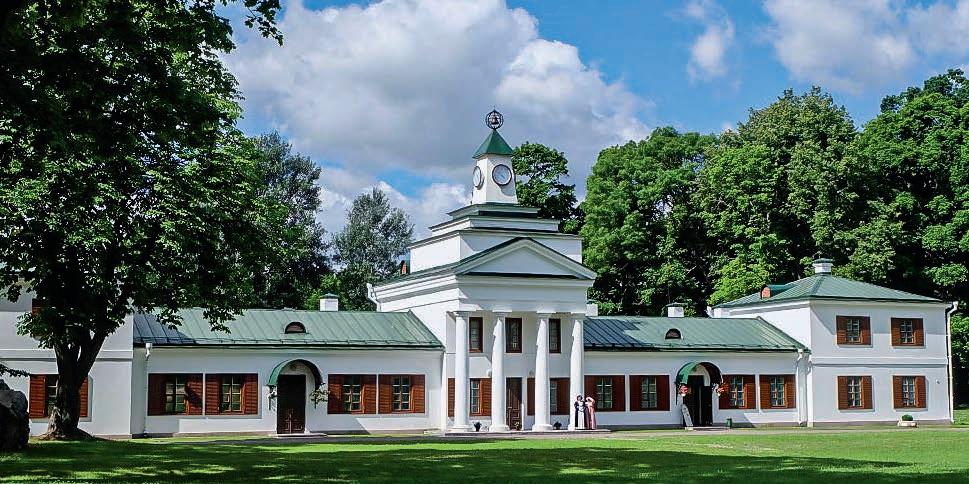
oginSkiZaleSSe.by
museum-estate of m.k. oginsky
Svyatsk (Grodno district), the Segeni estate in Kraski village (Volkovysk district), the Bokhvits estate in Podorosk village of the same district. Most of them are currently being renovated and will undoubtedly soon become even more attractive tourist destinations in the region.
National festivals, knightly tournaments, concerts of medieval music, exhibitions of folk crafts, concerts of folklore groups, which are regularly held under the walls of Mir, Novogrudok, Lida, Krevsky, Holshany castles, serve to preserve the historical and cultural heritage of Grodno region.
Of course, Grodno itself is a powerful tourist resource as one of the oldest cities in Belarus, with a history of about 900 years. Its remarkable architectural monuments play a significant role in the cultural heritage of the city. So, to this day, monuments of ancient Russian architecture have survived – the remains of fortress walls and towers, the Lower and BorisGleb churches, the Gothic, Renaissance and Baroque – the Bernardine church and monastery, the Old Castle, the Jesuit Farny church, the Brigitic and Franciscan monasteries with churches, and others of a wide variety of styles and trends. In addition, the only royal residence in Belarus with two almost intact castles has survived in Grodno.
Grodno, despite its antiquity, is also a modern European city. It is a large scientific and cultural center with a population of over 360 thousand people. A unique and one of a kind city of Belarus, unlike any other in the country. Despite the fact that today it is rapidly developing and settling down, history seems to have frozen on the ancient streets of the Old City and left contemporaries a memory of its past.
Today Grodno is truly an open-air citymuseum. It is not for nothing that the State Historical and Archaeological Museum, the only in Belarus State Museum of the History of Religion, the Gorodnitsa History Museum, the House-Museum of Maxim Bogdanovich, the Eliza Ozheshko Museum and many others are located here.
It should also be said that only a few tens of kilometers from Grodno is the Augustow Canal – a unique hydrotechnical structure of the 19th century, included in the state list of historical and cultural values of Belarus. In the basin of the Augustow Canal, many sights, outstanding monuments of culture, architecture, ecology, and military history have been preserved. The Augustow Canal is a unique place also for the reason that the borders of three states – Poland, Belarus and Lithuania – converge here. Having visited the water area of the Augustow Canal, tourists have the opportunity to both relax and enjoy communicating with the rich nature.
– And yet, what sights in the region – historical, cultural, archaeological, natural – do you recommend tourists to see first of all?
– As I have already noted, Grodno region stands out among other regions of Belarus for its rich history and cultural and historical heritage of ancestral estates, temple and castle architecture. The leading role in the cultural heritage of the region is played by its unique architectural monuments and their entire ensembles. In total, more than one and a half thousand historical and cultural monuments have been preserved in the region, including objects of world value. Such as Mir Castle, points of the Struve Arc, included in the UNESCO World Cultural Heritage List. As well as other objects claiming to be included in this List. These are the Kolozhskaya church of the 12th century in Grodno, the Synkovichi church of the 15th century in the Zelvensky district,
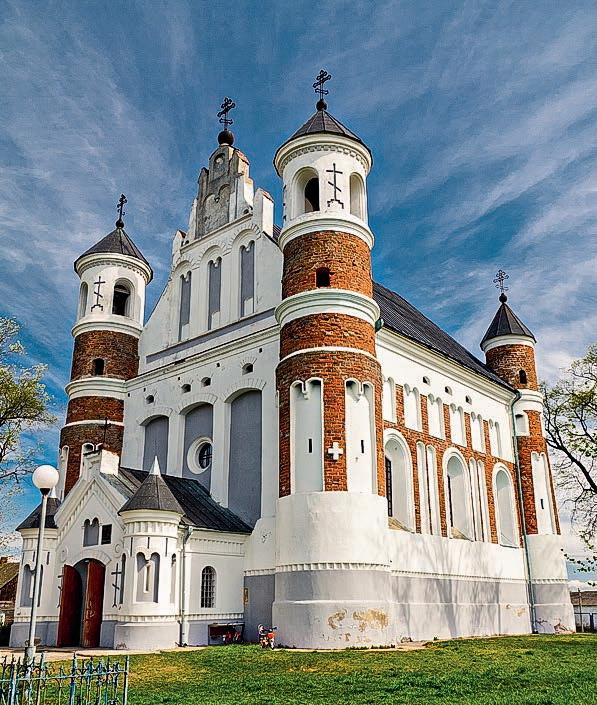
fortress type church of the nativity of the blessed Virgin in the village of murovanka
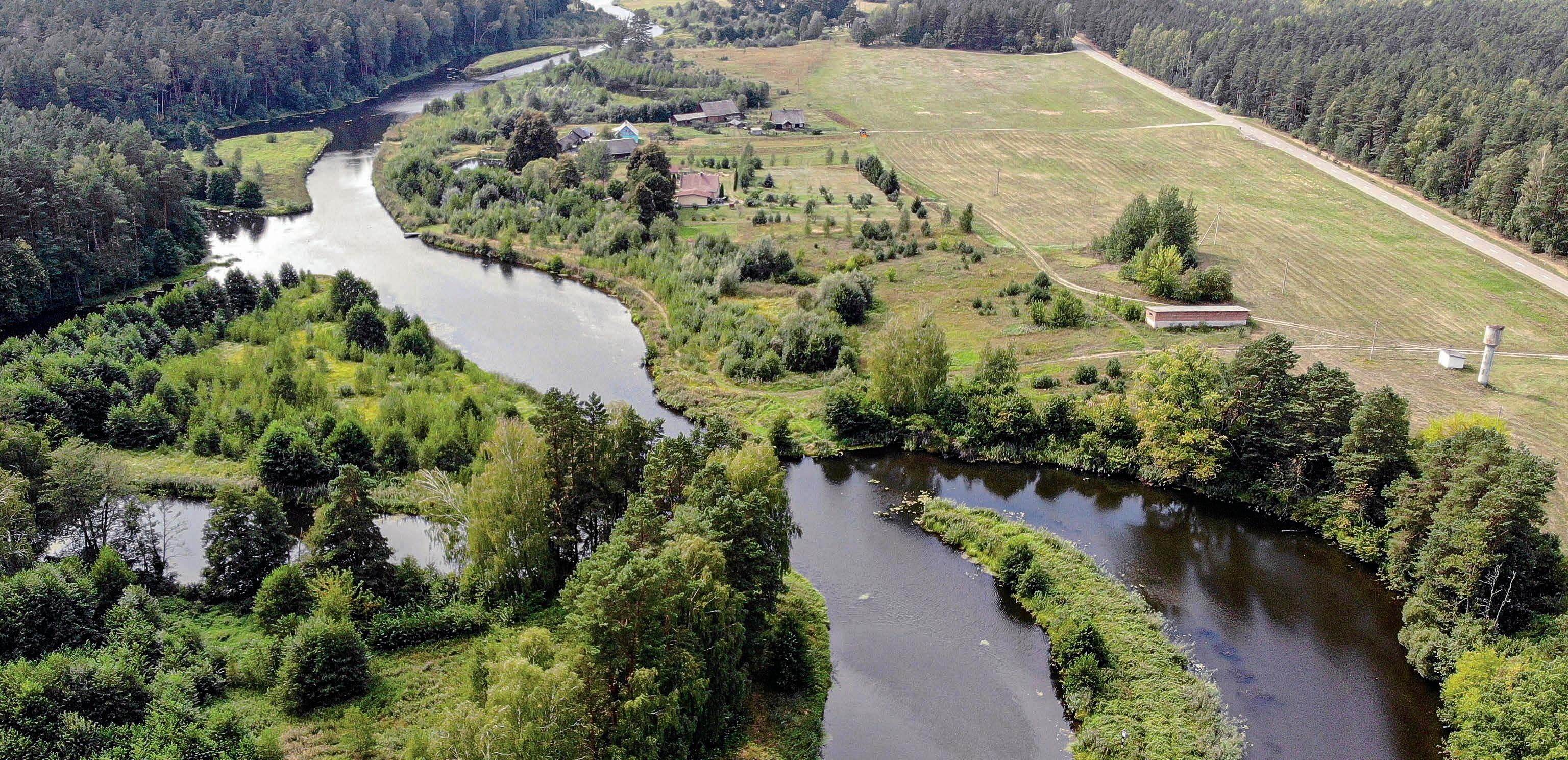
belta
augustow canal in grodno district
the fortress church in the village of Murovanka, Shchuchinsky district, the miracle of engineering of the first half of the 19th century – the Augustow Canal in Grodno region, a unique archaeological monument – Krasnoselsky Neolithic stone mines. Of course, all these objects cannot leave tourists indifferent and will always attract attention.
In short, the territory of Grodno region today has a rich cultural and historical potential to attract tourist flows. And, accordingly, – for the further development of domestic and inbound tourism to the Republic of Belarus as a whole.
– How many tourists visit the region on average per year? Do their priorities change over time? How does the receiving party take this circumstance into account?
– Every year, thousands of tourists from all over Belarus and other countries come to Grodno region to get acquainted with the historical heritage of Mir Castle, ancient Novogrudok and Slonim. In order to visit the homeland of Adam Mitskevich, Hafets Chaim, Michal Kleofas Oginsky, Eliza Ozheshko.
The rich cultural and historical potential of Grodno region attracts foreign tourists not only within the framework of cultural and educational, but also nostalgic tours. After all, the unique geographical position of the region has contributed to the common historical cultural ties with the bordering states. In order to promote the tourism potential and the development of inbound tourism in Grodno region, the state provides comprehensive support. A significant event in the development of inbound tourism was the introduction of a visa-free regime. In accordance with the Presidential Decree, foreign tourists have the opportunity to stay in Grodno region without a visa for 15 days. In general, and for this reason including, in recent years, tourism in the region has developed quite dynamically. For example, in the first two months of 2020, the growth rate of the export of tourism services was 125 percent (the best indicator in recent years), from January 1 to March 14, 2020 (before the first wave of coronavirus), 17.5 thousand tourists visited the visa-free territory. Unfortunately, in the subsequent time, the unfavorable epidemiological situation in the world led to a decrease in the tourist flow to the region by almost five times. Compare: 22,657 visa-free tourists in 2020 and 125,732 in 2019.
– What new tourist routes, new tourist programs have appeared in the region recently? Why are they attractive?
– Yes, in order to use as many objects of historical and cultural heritage and tourist infrastructure as possible, work is underway to create new interregional tourist routes. Each district of Grodno region is looking for its own "chips": places of attraction for tourists, working on improving infrastructure, positioning tourism opportunities on the Internet. Despite all the difficulties of 2020, tourism has not lost its relevance. The crisis has led to a change in trends and reorientation of destinations, an increase in interest in domestic tourism and the growth of active and ecological tourism.
Cycling routes are becoming more and more popular. In total, for 2021, 98 cycling routes have been developed in Grodno region, 106 bicycle paths with a total length of almost 240 kilometers have been equipped. Over the past five years, all districts of the region have been developing new cycling routes, marking them with appropriate signs, for example, the August Velo cycle route.
This year it is planned to organize a tourist route in the Lipichanskaya Pushcha Republican Landscape Reserve, to create an ecological trail on the territory of the Miranka Republican Hydrological Reserve. Currently, the issue
of equipping parking lots for a walking route of a sightseeing tour of the unique biological reserve of local importance "Garadzenskaya Svislach" is being studied. In the Ostrovets District, a project of a water route is being implemented on the territory of the Republican Landscape Reserve "Sarochanskie Lakes".
Meanwhile, pages of districts on tourism topics have been created on the social networks Facebook and Instagram in all districtss of the region. There materials are regularly published on the tourism potential of the districts, the events held in tourism. The main pages of Grodno region "Visit Grodno Region" in the social networks Facebook, Instagram, Telegram are maintained by the Sports and Tourism Department of Grodno regional Executive Committee. I would also like to note the #routes_ Grodno_Region section in the Telegram channel. Weekly Telegram publishes tourist routes in Grodno region with a description of the objects to see and infrastructure facilities located along the route.
The largest information platform is the Grodnovisafree website, which contains information about the main attractions of the region, events, tourist routes, accommodation and catering facilities. Information on the site is presented in five languages: Polish, English, Chinese, Russian, Lithuanian.
– How good is agritourism developed in the region? How much is it in demand?
– Agroecotourism in Grodno region is developing quite dynamically. The number of subjects in this area is increasing annually. Judge for yourself: in 2006 there were only 13 agricultural estates in the region, and in 2010 there were already 180, in 2016 – 324, and finally in 2020 – 433 agricultural estates. Until last year, revenue from agroecotourism services grew annually: in 2019 it amounted to 3.2 million rubles. In 2020, it decreased by 16 percent. The number of accepted agritourists in the same year amounted to more than 65 thousand people and this despite the pandemic.
It must be said that the share of domestic tourists in the total volume of agro-ecotourists is the majority. The main countries from which agrotourists also arrive are the Russian Federation, Poland, Lithuania. Although last year the trend has changed: most of the foreign agrotourists were from Russia, Uzbekistan and Kazakhstan.
In the agro-estates of Grodno region, as a rule, events are held that contribute to the popularization of agro-ecotourism, rural traditions and the rural way of life. Traditionally, every year in the region there are rural holidays – such as the "Festival of Flowers" in the urban village of Zheludok, Shchuchinsky district and the fair "Annenski kirmash" in the urban village of Zelva. Every year, the Podkostelok agroestate together with the management of the Sarochanskie Ozera reserve (Ostrovets district) holds the Day of Bream. On the basis of agro-estates in the Zelvensky district, the OPENFEST "Five nations" electronic music festival is held annually.
Recently, for the comprehensive service of tourists, the formation of various thematic routes, agro-estates have been combined into clusters. Two tourist clusters "Terem of entertainment" in Shchuchinsky and Lida districts, as well as a cluster "Zakhodnyaya skarbonka" in Zelvensky, Volkovysky and Svislochsky districts have already been registered. In general, interest in agricultural estates is growing. Recreation in nature and away from the bustle of the city remains relevant, respectively – the services of agroecoestates continue to be in demand among tourists.
– Summer is usually the peak of the tourist season. Is the region ready for it now? As, however, and for any other season of the tourist year?
– In order to ensure quality recreation in Grodno region, monitoring of tourism infrastructure and tourist facilities is systematically carried out. Last year, 166 signs of tourist-oriented navigation were installed on the territory of the region, of which 81 are road signs indicating directions to tourist attractions, 85 are information boards, banners, plaques with historical street names, parking signs for tourist buses.
For the organization of cycling tourism in the cities of Grodno and Lida, bicycle sharing began to work since last year. With the aim of organizing tourists' rest and better orientation, a mobile application "Grodno guide" has been developed, which is a universal mobile guide around Grodno.
In conclusion, I would like to note that guests are always welcome in Grodno region, here we are ready to receive tourists at any time of the year.
belta at "annenski kirmash" fair in Zelva Alexander Emelyanov
